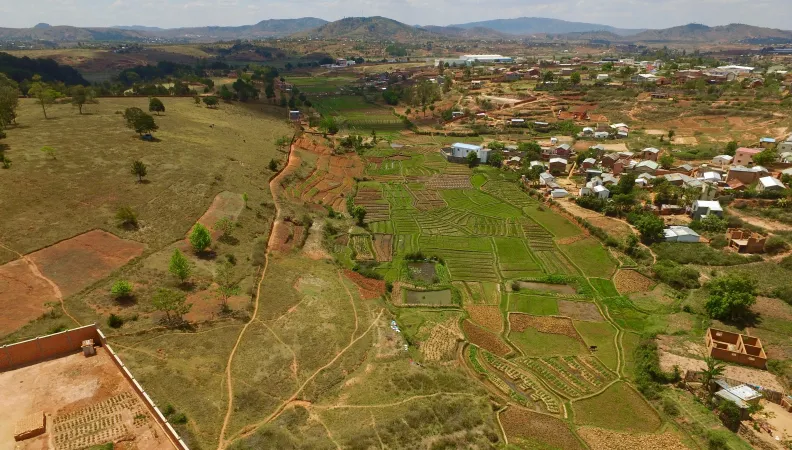Share the page
Financing a sustainable future: de-risking innovation through food systems investing
Published on
Tim Crosby Chair Transformational Investing in Food Systems (TIFS)


Private Sector & Development #39 - Food security: the contribution of the private sector
To mark World Food Day on 16th October 2023, the 39th issue was devoted to food security. It provides a collective reflection on the subject and highlights the need to get the private sector more involved in safeguarding food security across the globe.
Faced with the negative-dominant impacts of food production, opportunities in sustainable food businesses need to be aligned with the capital available for transformation. To achieve this, they must be brought within view of private sector impact-first investors. This requires calculated and thoughtful government interventions.
Multiple reports and research programs have shown that the true cost of food is disproportionally high, with the negative impacts outweighing the positive value. The Scientific Group of the UN Food Systems Summit in 2021 estimated the annual costs of environmental, health and economic impacts of food systems at roughly USD 29 trillion per year, compared with the economic value of food sold at market prices, of USD 9 trillion per year. The global food system contributes upwards of 33% of greenhouse gas emissions, with agriculture being the primary driver of biodiversity loss. Almost 10% of the global population is hungry or undernourished, while diet-related diseases are a major 21st century challenge.
An estimated investment of USD 300-350 billion per year is needed to make food systems sustainable and climate resilient. These investments could result in new business opportunities worth up to USD 4.5 trillion a year by 2030. The “Mobilizing Money and Movements” report, by TIFS, features companies that exemplify the ideals of the network.
THE MISSING MIDDLE
Financial institutions and normal financial flows are not currently serving the need for capital investments in farming, ranching, fishing, and related SMEs that advance multiple Sustainable Development Goals (SDGs) at the same time. The innovative enterprises included in the ‘Mobilizing Money’ report are often seen as being too small or risky by institutional investors, with the funding available to them being scarce and expensive compared with that on offer to larger food businesses. This disconnect between the available capital for transformational food system businesses and the lack of visibility of investable opportunities for investors requires calculated and thoughtful government interventions to bring these opportunities within the view of private sector impact-first investors. This necessitates developing public-private-philanthropy partnerships that de-risk the financial innovations necessary for resiliency in our global and regional food systems.
In emerging from its design phase, TIFS is focusing on the missing middle of food systems investing: the gaps that make it challenging to mobilize the financial capital needed for food systems transformation. These include:
- Financial markets
Global public equity markets allocate capital that indirectly generates both positive and negative externalities. By using verifiable methods to reduce negative externalities, access to capital for enterprises generating positive externalities could be improved, mitigating their deemed higher risk. Financial precedent-setting examples are needed that revise definitions of risk, reward, efficiency and scale, in moving towards increasing food security, biodiversity and climate resilience.
- Financial capital allocators
SMEs adopting regenerative and agroecological principles often need flexible finance (e.g. loan guarantees and other forms of collateral, and blended finance to match smaller scales). Grant-makers do not make grants aimed at business success, while investors shy away from unfamiliar models (e.g. agroecological production), overpricing risk, and making capital unattainable. Also, the investment needs of socio-ecological enterprises may be too small for large investors, yet these innovative SMEs are needed to achieve global goals. This requires better financial pricing.
SYSTEMS DATA, RISK ASSESSMENT AND IMPACT VERIFICATION
Metrics that drive global food systems are primarily geared towards yield and scale, yet to achieve the SDGs, we need data and evidence that provides a systems investing lens which enables investors to respond to value destruction as well as value creation. Developments in finance and agricultural technologies must include producing data that identifies and assesses financial and systems risks: financially benefiting both the producers and stewards of natural, social and human capital – and investors’ financial capital. TIFS’ System Investing Assessment tools are designed to analyze funds for systems advances, and to enable applying standards in development.
National and local policies favor existing large-scale actors in the food system, making it easier for institutions to finance the status quo. However, companies that are ‘shifting the system’ are seen as higher risk and compete on an uneven playing field. Policies and incentives (including government subsidies, loan guarantees, first-loss capital, and accelerator services) can de-risk innovation to level the financial playing field and thereby unlock private investment.
The Global Alliance for the Future of Food (the author is a member) is working with philanthropists to create a global platform that accelerates finance for the regenerative, agroecological transition. TIFS’ field-building efforts support this work by building regional communities of solutions-oriented finance innovators. In order to achieve a healthy, resilient, equitable, renewable, diverse and inclusive food system, we must account for environmental, social, and health impacts to inform better decision-making. Unlocking investment opportunities in sustainable food systems and aligning private, philanthropic, and multilateral funders with national food systems actors can leverage ecologically-beneficial forms of farming, healthy food, and resilient livelihoods and communities.

